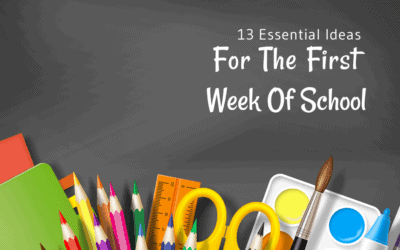Being a teacher is hard and being a teacher when you have students with behaviors that disrupt your classroom can be even harder. It’s a natural reaction to jump to “punishment” as soon as behaviors occur, but research shows that punishment just DOESN’T work, and alternatives to punishment should be considered. Don’t get me wrong, it does stop the behavior at that moment but it does nothing to create long-term change and can even reinforce that behavior which may lead to an increase in the frequency of the behavior. That is certainly not what we want to happen.
So if we know that punishment doesn’t work, what does? Here is a shortlist of 5 alternatives to punishment that you can use in the classroom.
5 Alternatives to Punishment
1. Reinforce the behaviors you want to see more of:
One thing we know FOR SURE is that reinforcement works when we use it right. One sure-fire behavior trick is to reinforce the behavior that you want to see more of. For example; you have a student that calls out without raising his/her hand and that behavior is really interfering with the classroom. The most effective way to use reinforcement is to reinforce the behavior you want to see (hand-raising) as often as you can. So instead of punishing a student for calling out, reinforce them for raising their hand. It’s just a small shift but it has big power in changing behavior!
2. Reinforce others that are displaying the desired behavior:
We know that reinforcing the behavior we want to see is powerful, but another way to use reinforcement is to reinforce someone else in the class that is displaying the behavior you want to see. So let’s use the hand-raising example again. Instead of punishing the student that is calling out, you can reinforce another student for raising their hand. Often times this will be enough of a “reminder” to the other student of what behavior you are expecting. This again allows you to stay positive while still addressing the interfering behavior.
3. Ignore minor inappropriate behaviors:
Yes- I am giving you permission to just ignore some behaviors. More than giving you permission, I am encouraging you to do just that. Sometimes we can get so caught up in dealing with every behavior from every student that we end up in power struggles and negative slides that we never saw coming. Sometimes students display behaviors to get attention, and if we call them out every time, we are not changing the behavior, but likely increasing the strength of the behavior! I know that sounds antithetical, but it is actually true! Sometimes simply ignoring a behavior makes it go away.
4. Change the activity to see if a change of pace improves the behavior:
Sometimes behaviors pop up because the activity/lesson has gone on too long for a particular student. I am not suggesting you change the behavior every time any student displays any behavior, however, if you have a student whose behaviors are disrupting your teaching, it can sometimes help to switch things up and do something different that requires a different type of learning. So if you are doing a teacher-led lesson, switch it up and move the students into small groups. Sometimes just a small change can be enough to turn things around!
5. Check to make sure your expectations are clear:
This is so so important! (I will go into this more in a future blog). If you can only do one thing, do this! Are your expectations clear to EVERY student in your class? Do they know what you expect during all parts of the day? Have you spent time actually teaching your students what the classroom procedures and expectations are? If you haven’t done this, stop what your doing, set your lesson plan aside, and put good solid time into teaching your students the what, when, and how of your classroom.
I am embarrassed to admit this but when I started teaching, I barely used reinforcement in my classroom. I felt too overwhelmed to even think about it and even if I did, I wasn’t convinced it would make a difference. Well, I am here to tell you I was wrong! Reinforcement is your power in the classroom and the more you use it, the less you will need it! And if you need a visual reminder of what you can use as alternatives to punishment, check this out!
Did you enjoy this post on alternatives to punishment? Share it with a friend so they can, too!

Connect with me on Instagram, Pinterest or Facebook and you’ll receive additional tips, tricks, and resources.
https://brandierosenconsulting.com/





